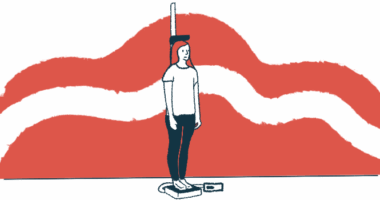Surgery Can Successfully Treat Obstructive Sleep Apnea, Malocclusion in PWS, Case Study Reports

Patients with Prader-Willi syndrome (PWS) who develop significant obstructive sleep apnea and malocclusion can be successfully treated using surgical methods, according to a case report.
The case study, “Orthognathic Correction in Prader-Willi Syndrome: Occlusion and Sleep Restored,” was published in The Cleft Palate-Craniofacial Journal.
Prader-Willi children can exhibit a range of symptoms, including a delay in development, poor muscle tone, and significant weight gain leading to obesity. Obesity is often linked to the development of obstructive sleep apnea (OSA) and type 2 diabetes.
OSA, in particular, is highly prevalent among Prader-Willi patients. In fact, OSA has become a minor criterion for a diagnosis of Prader-Willi syndrome.
If left untreated, obstructive sleep apnea can lead to significant health issues, including hypertension (high blood pressure), cardiac arrhythmias, and stroke.
Unfortunately, despite these consequences, there is a lack of consensus in the management of OSA in Prader-Willi children. This is particularly true for Prader-Willi patients who have obstructive sleep apnea along with other diseases.
In the study, researchers present the case of a 14-year old Prader-Willi boy with OSA and a debilitating malocclusion — a condition that is characterized by a misalignment between the teeth of the upper and lower jaw.
The patient was referred to the plastic surgery department at Children’s Mercy Hospital in Kansas City, Missouri, for the treatment of severe malocclusion after the patient was in orthodontic care for two years.
Because the patient had Prader-Willi syndrome, obstructive sleep apnea, and malocclusion, it provided physicians with a unique opportunity to combine various surgical modalities to treat both his malocclusion and his OSA.
The boy was initially placed on continuous positive airway pressure (CPAP) to treat his OSA. However, as is the case with most patients placed on CPAP, the patient was noncompliant to its use.
While obstructive sleep apnea is generally best treated by a surgery called maxillomandibular advancement — a surgery to move the upper and the lower jaws forward — the patient also had severe class 3 malocclusion, leading physicians to debate the best method to tackle these conditions.
Which surgical procedures to conduct was made after taking a number of factors into account, including both the best surgical approach to correct the malocclusion and the patient’s behavioral issues, which would make long and difficult procedures less desirable.
In the end, researchers conducted a combination of Le Fort 1 osteotomy (a type of jaw surgery used to correct an abnormally positioned jaw for treatment of malocclusion), genioplasty (a surgery done on the chin), and tongue reduction to successfully treat the patient’s obstructive sleep apnea and malocclusion.
Based on this case report, the researchers emphasized that “clinicians must recognize the strong prevalence of OSA in patients with [Prader-Willi syndrome], as well as the heterogeneity of malocclusion in these patients. Clinicians should examine each individual’s facial anatomy, identify the factors contributing to obstruction, and deduce if orthognathic correction will be favorable.”
“In select cases, orthognathic correction and other surgical therapies should be considered in patients with PWS,” they added.






